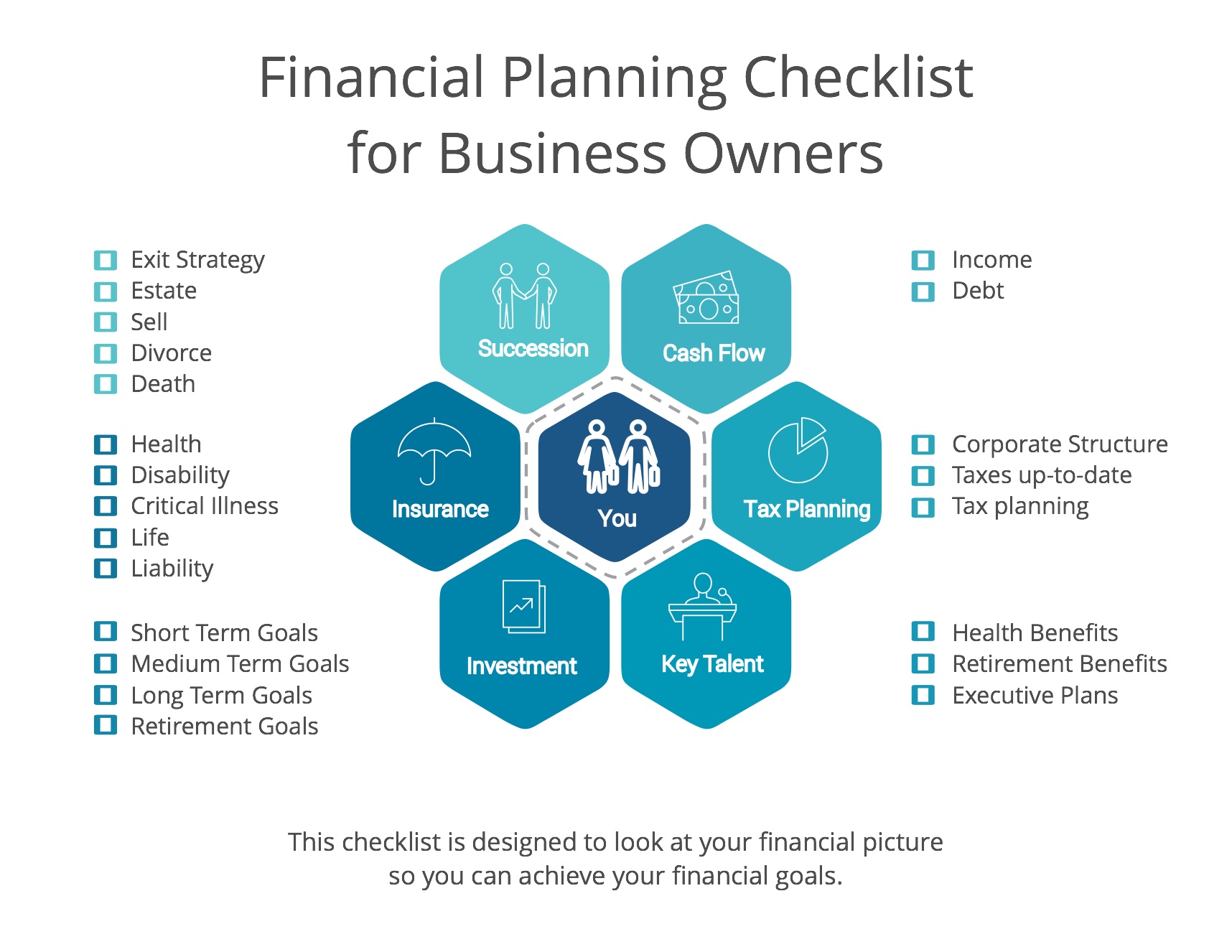A company can own and be the beneficiary of life insurance. There are many reasons that a corporation might own life insurance: key person, loan security, buy/sell arrangements, shareholder protection. In addition, we often use insurance in the holding or investment companies of business owners to achieve personal goals such as supplementing their retirement income, providing efficient funding for their business expansion, and the payment of capital gains taxes owing upon death.
Financial Planning for business owners is often two-sided: personal financial planning and planning for the business.
Business owners have access to a lot of financial tools that employees don’t have access to; this is a great advantage, however it can be overwhelming too. A financial plan can relieve this.
A financial plan looks at where you are today and where you want to go. It determines your short, medium and long term financial goals and how you can reach them. For you, personally and for your business.
Why do you need a Financial Plan?
- Worry less about money and gain control.
- Organize your finances.
- Prioritize your goals.
- Focus on the big picture.
- Save money to reach your goals.
For a business owner, personal and business finances are connected. Therefore both sides should be addressed: Personal and Business.
What does a Financial Plan for a Business include?
There are 2 main sides your business financial plan should address: Growth and Preservation
Growth:
- Cash Management- Managing Cash & Debt
- Tax Planning- Finding tax efficiencies
- Retaining & Attracting Key Talent
Preservation:
- Investment- either back into the business or outside of the business
- Insurance Planning/Risk Management
- Succession/Exit Planning
What does a Personal Financial Plan include?
There are 2 main sides your financial plan should address: Accumulation and Protection
Accumulation:
- Cash Management – Savings and Debt
- Tax Planning
- Investments
Protection:
- Insurance Planning
- Health Insurance
- Estate Planning
What’s the Financial Planning Process?
- Establish and define the financial planner-client relationship.
- Gather information about current financial situation and goals including lifestyle goals.
- Analyze and evaluate current financial status.
- Develop and present strategies and solutions to achieve goals.
- Implement recommendations.
- Monitor and review recommendations. Adjust if necessary.

Next steps…
- Talk to us about helping you get your finances in order so you can achieve your lifestyle and financial goals.
- Feel confident in knowing you have a plan to get to your goals.
